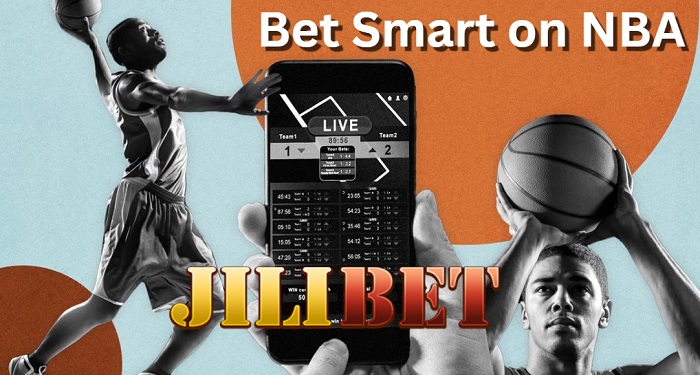In the thrilling world of soccer betting, many people place bets based on gut feeling or simply support their favorite teams. That might work for casual players, but if you want to take betting more seriously—especially on platforms like jilibet—there’s one key truth you must understand: emotion is your enemy—data is your ally.
Today, we’ll explore data-driven soccer betting: how it works, where to find the data, and how to actually apply it to improve your win rate. Whether you’re a seasoned bettor on jilibet looking to refine your strategy or a beginner trying to build the right mindset, this guide will help lay a solid foundation.
Why Use Statistical Data?
Soccer may be hard to predict, but it’s not random. Teams have patterns, players have habits, and leagues show trends. The goal of using data isn’t to predict the future with 100% accuracy (that’s impossible), but to make smarter decisions than most people.

Data can help you:
- Identify value bets (when odds are higher than the true probability)
- Spot trends and patterns in teams or leagues
- Avoid emotional betting and make decisions based on logic
- Track and optimize your betting performance
Basic Stats Every Bettor Should Know
Let’s look at some key types of data and how they relate to betting.
Statistics provide insights into trends, patterns, and probabilities that can significantly impact your betting decisions. Whether you’re into sports betting, casino games, or poker, data can help you assess risk and potential returns more effectively. For instance, in sports betting, a deep dive into team performance statistics, player injuries, weather conditions, and historical match outcomes can give you an edge over other bettors who are relying solely on gut feelings or surface-level information.
Team Data
- Average goals scored/conceded: Useful for Over/Under betting.
- Home vs. away performance: Some teams are lions at home, kittens away.
- Recent form (last 5 games): Shows whether a team is rising or slumping.
- Shots on target per game: Reflects offensive pressure, even if goal numbers are low.
- Possession rate: Indicates control of the game, but doesn’t always equal winning.
Player Data
- Goals and assists: Useful for “first goalscorer” or “anytime goalscorer” bets.
- Injury/suspension status: Missing key players can greatly affect a team’s strength.
- Cards (yellow/red): Helps with betting on player fouls or match intensity.
League Data
- Average goals per match: For example, the Bundesliga tends to have more high-scoring games than the Premier League.
- BTTS (Both Teams To Score) rate: Useful for BTTS betting strategies.
- Draw frequency: Affects bets like “Draw No Bet” or “Double Chance.”
What is xG (Expected Goals) and Why It Matters?
Look at the completion percentage of the quarterback. See how many yards a running back gains each carry. Also, check how long a team keeps the ball and expected goals (xG). Lastly, look at how well a team defends. All these can help you make smarter bets.
In data-based betting, one of the most important and telling metrics is xG.
What is xG?
xG stands for “expected goals.” It measures the quality of scoring chances created by a player or team. For example, a close-range open-net shot might have an xG of 0.90, while a 35-yard strike might only rate 0.05.
How does xG help with betting?
Imagine Team A has lost three matches in a row, but their xG was higher than their opponents in all of them. This suggests they created better chances but lacked finishing or luck. That’s a classic case of a team performing well but getting poor results—making them a great value pick for a rebound.
With xG, you can:
- Spot underrated teams (likely to bounce back soon)
- Identify overrated teams (getting results thanks to luck)
- Make better calls on Over/Under, BTTS, and other markets
How to Build a Simple Data-Driven Betting Strategy
You don’t need to be a data scientist. A logical, simple strategy can still raise your win rate.
Step 1: Choose a Market You Know
Good starting points:
- Over/Under 2.5 Goals
- BTTS (Both Teams To Score)
- Match Result (1X2)
Step 2: Set Your Filters
For example, for Over 2.5 Goals:
- Both teams average more than 2.8 goals per game
- 3 or more of their last 5 games went over 2.5
- xG data shows active attacking play
Step 3: Analyze and Select Matches
Look for matches that meet your criteria. Pick 3–5 top choices per round.
Example: Data Analysis for a Premier League Match
Let’s say Liverpool vs. Brentford
Bookmaker odds:
- Over 2.5 goals = 1.60
- BTTS = 1.75
Your analysis:
- Liverpool average 3.1 goals per game
- Brentford have scored in 9 of their last 10 matches
- xG data: Liverpool 2.2, Brentford 1.5
- Their last 3 matchups all went over 2.5 goals
Conclusion:
Both Over 2.5 and BTTS look promising, but BTTS has better odds and is well supported by data—this is a value bet.
Common Mistakes When Using Data
Even if you bet based on data, watch out for these traps:
While data analysis can be a powerful tool, it’s vital to recognize the potential pitfalls:
- Over-reliance on Single Metrics: Focusing on a single statistic, like a player’s recent scoring average, can be misleading. A more holistic approach is necessary.
- Ignoring External Factors: Data analysis should consider external factors that can influence outcomes, such as weather conditions, venue, or player injuries.
- Data Bias: Data sets can contain biases that can lead to inaccurate conclusions. It’s crucial to critically evaluate the source and integrity of the data.
Survivorship Bias: Focusing solely on teams or players that have consistently performed well in the past, without considering those who have underperformed, may lead to erroneous conclusions.
Tools and Tips for Advanced Players
If you want to level up, consider these methods:
Use Statistical Software: For the more data-savvy bettor, consider using statistical software or applications that can help you analyze data more deeply and identify trends.
Paid Analytics Platforms
Building Your Own Models:
If you’re tech-savvy, make your own models. Use programs like Python or R to crunch numbers. This gives you total control over your betting strategy.
Watch the Odds Movement
Track opening and live odds changes to read market sentiment and how sportsbooks react.
Another essential statistical consideration in sports betting is understanding the concept of odds. Sportsbooks set odds based on probabilities derived from a variety of statistical analyses. By learning to recognize when you’re getting value in odds – that is, when the odds suggest a lower probability of an outcome than your analysis indicates – you can position yourself to leverage these discrepancies for profit.
Final Thoughts: Bet Smart, Not Lucky
Soccer is full of unpredictables—red cards, mistakes, VAR drama. But that’s exactly why using data gives you an edge in the long run.
Remember:
- Data won’t make you win every bet, but it will help you bet rationally
- Discipline and tracking are key to improving your strategy
Finding value bets is more important than just picking winners
- Double Fortune – Double the Luck and Prosperity! - July 7, 2025
- Legend of Perseus – A Heroic Slot Journey Through Ancient Myths - July 7, 2025
- Journey to the Wealth – Embark on an Epic Adventure for Big Wins - July 7, 2025


